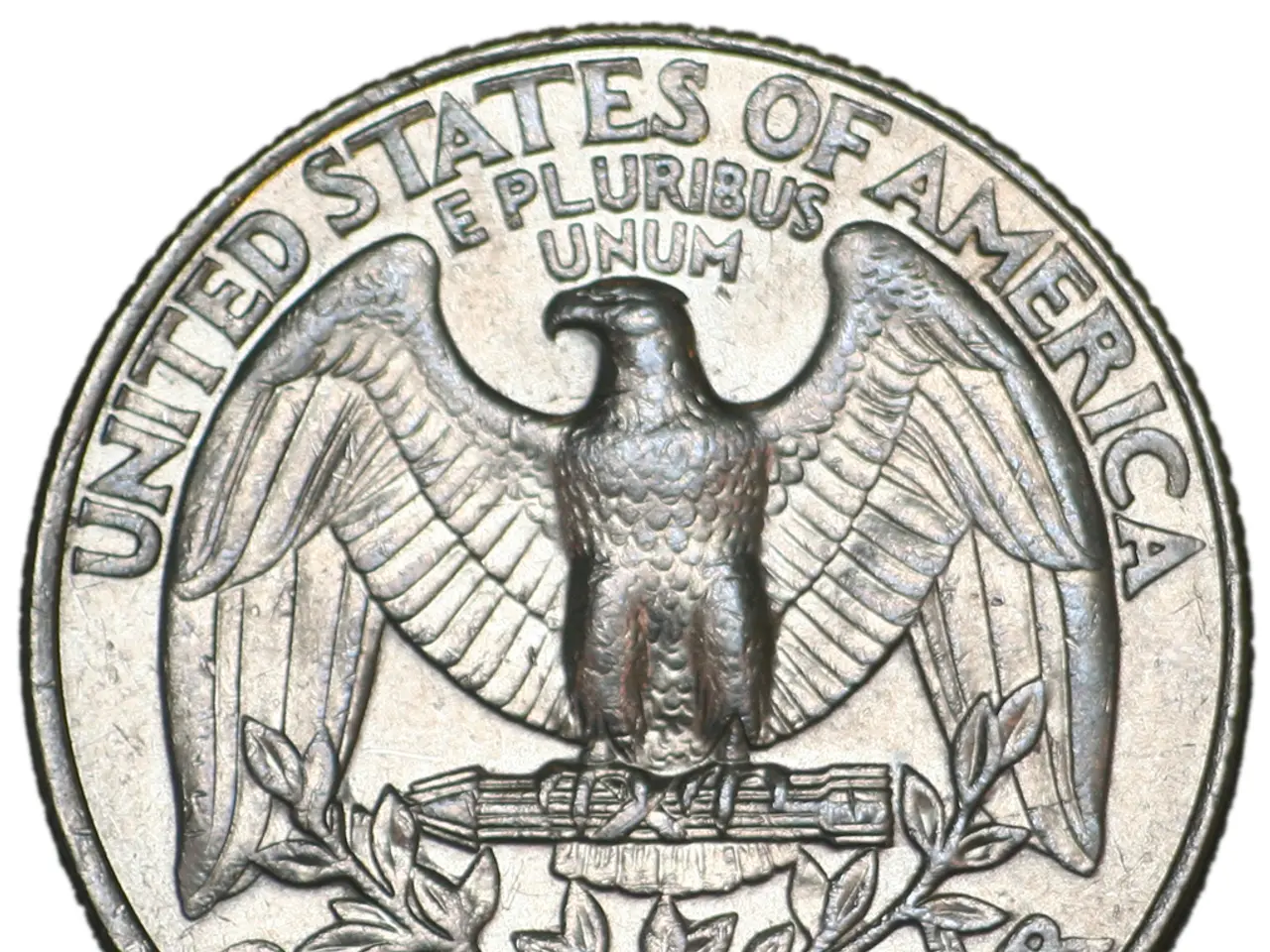Dollar Strengthens following Trump's Declaration of Fresh Trade Taxes
In the realm of global finance, the impact of President Donald Trump's tariff announcements, effective from July 8, 2025, has sent ripples through the currency markets. The expiration of a 90-day pause on the administration's tariffs, which included a 10% duty on US imports and country-specific reciprocal tariffs on major trading partners such as the European Union, has heightened economic uncertainty and market volatility.
The tariffs have contributed to a surge in U.S. Treasury tariff revenues, reaching an impressive $97.3 billion by early July 2025, more than doubling from the previous year. This sharp rise reflects higher costs on imports, often passed on to consumers, effectively acting as a consumption tax and influencing inflation expectations.
However, the trade deficit in goods has significantly increased, by $175 billion compared to the previous year, indicating that despite tariffs, imports remain high in the short term as businesses front-load purchases before tariff hikes take deeper effect. This trend tends to exert downward pressure on the US Dollar in foreign exchange markets, though the full impact depends on other macroeconomic factors.
Retaliatory tariffs from trading partners have also been imposed, reducing U.S. exports and complicating trade dynamics. These tit-for-tat tariffs have the potential to destabilize currency valuations globally as countries adjust to slower trade flows and altered capital movements.
The delayed implementation or temporary suspension of some tariffs, notably those on EU goods until around July 7-9, 2025, created mixed signals in currency markets. The EU, a major trading bloc, has significant leverage due to its share of U.S. exports, and its response to tariffs likely impacts the Euro relative to the Dollar.
Amid this tariff confusion and market volatility, the US dollar has experienced a rebound. On July 8th, 2025, the US dollar surged to its highest level in over a week. Market analysts noted that the tariffs have dampened sentiment towards risky assets, and the recent robust US payroll numbers have bolstered the dollar, reducing the likelihood of Federal Reserve rate cuts.
Notably, the yen dropped by as much as 1.2% to 146.15 per US dollar, and the South Korean won fell about 1.1% to 1378 per dollar. The yen and the won declined by more than 1% each due to Trump's tariff announcement.
As the US actively reaches out to trading partners ahead of a Wednesday deadline to finalize deals, the future of global currency markets remains uncertain. The tariffs under Trump’s 2025 trade policy have unquestionably increased market uncertainty and contributed to currency market volatility around the July 2025 timeline.
This article is from the "Global Logistics" section. It is essential to monitor these developments closely as they unfold, as they have profound implications for businesses and investors alike.
[1] Source: https://www.reuters.com/article/us-usa-trade-tariffs-idUSKCN1MZ212 [2] Source: https://www.bloomberg.com/news/articles/2025-07-08/trump-s-tariffs-are-boosting-u-s-treasury-revenues-but-hurting-the-dollar [3] Source: https://www.cnbc.com/2025/07/09/trump-tariffs-are-hitting-the-european-union-hard-but-the-european-union-is-fighting-back.html
- The tariff announcements by President Donald Trump, effective from July 8, 2025, have not only affected the currency markets but also the overall business landscape, as they have increased market uncertainty and contributed to currency market volatility.
- The impact of Trump's tariffs reaches beyond the realm of finance, as they have implications for general-news and politics, with potential consequences for global trade and the valuation of currencies.




